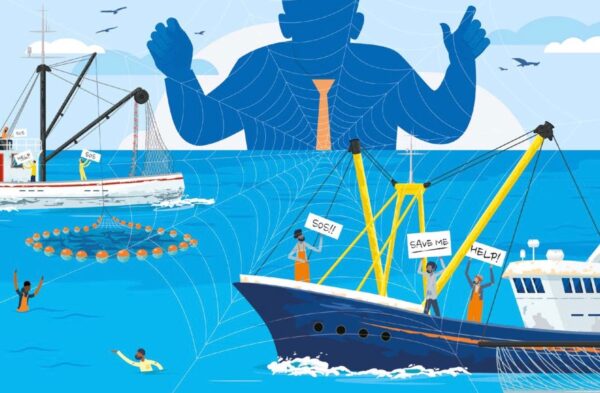A new report by the Financial Transparency Coalition and members finds that 22.5% of industrial and semi-industrial fishing vessels accused of forced labour were owned by European companies, topped by Spain, Russia and UK firms.
According to the report, in Europe most vessels were identified in Ireland (19), Spain (8) and the UK (7), with these three countries accounting for 83 percent of all vessels accused of forced labour in that region.
The report entitled ‘Dark webs: uncovering those behind forced labour on fishing fleets’ also found that companies from just five countries – China, Taiwan, Thailand, South Korea and Spain – own almost two-thirds of accused vessels for which legal ownership data is available.
In total, 128,000 fishers, mostly from the global South, were trapped in forced labour aboard fishing vessels in 2021, often in the high seas, although the true figure could be much greater, according to the UN International Labour Organisation (ILO). They suffered abuses ranging from physical violence and debt bondage to abusive working conditions.
Other report key findings include:
- More than 40 percent of industrial and semi-industrial fishing vessels accused of forced labour operated in Asia, followed by Africa (21%), Europe (14%) and LAC (11%).
- Indonesia emerges as the global hotspot for forced labour cases, with nearly one-fourth of detected vessels operating in its waters. In addition, 45% of accused vessels operated or were detected in just five countries: Indonesia, Ireland, Uruguay, Somalia and Thailand.
“We are once again seeing the heartbreaking reality of what is happening on some commercial fishing vessels out at sea and it’s completely unacceptable,” Beth Lowell, vice president in the U.S. for the conservation group Oceana, said about the report, which she had no role in. “Forced labor and other human rights abuses should not be the cost for a seafood dinner.”
The full report, ‘Dark webs: uncovering those behind forced labour on fishing fleets’, can be found here and the Executive Summary is here.
